-
 Bitcoin
Bitcoin $83,120.3689
-0.31% -
 Ethereum
Ethereum $1,835.4640
-2.15% -
 Tether USDt
Tether USDt $0.9997
0.01% -
 XRP
XRP $2.1714
3.59% -
 BNB
BNB $606.1860
-0.11% -
 Solana
Solana $125.8079
-0.63% -
 USDC
USDC $0.9999
-0.03% -
 Dogecoin
Dogecoin $0.1707
-1.13% -
 Cardano
Cardano $0.6814
0.51% -
 TRON
TRON $0.2308
-1.73% -
 Toncoin
Toncoin $3.8318
3.62% -
 Chainlink
Chainlink $13.7416
-0.88% -
 UNUS SED LEO
UNUS SED LEO $9.6504
-0.44% -
 Stellar
Stellar $0.2697
0.71% -
 Avalanche
Avalanche $19.4361
-2.90% -
 Sui
Sui $2.3866
0.04% -
 Shiba Inu
Shiba Inu $0.0...01264
-1.28% -
 Hedera
Hedera $0.1713
-0.77% -
 Litecoin
Litecoin $86.3119
0.05% -
 Polkadot
Polkadot $4.1227
0.21% -
 MANTRA
MANTRA $6.3932
1.10% -
 Bitcoin Cash
Bitcoin Cash $306.5274
0.07% -
 Bitget Token
Bitget Token $4.6730
0.15% -
 Dai
Dai $1.0000
0.01% -
 Ethena USDe
Ethena USDe $1.0000
0.07% -
 Pi
Pi $0.7645
-7.82% -
 Hyperliquid
Hyperliquid $12.4549
-1.89% -
 Monero
Monero $217.5995
0.30% -
 Uniswap
Uniswap $5.9911
-1.97% -
 Aptos
Aptos $5.3122
-1.82%
How do I adjust slippage tolerance in Trust Wallet?
Adjust slippage tolerance on Uniswap via Trust Wallet by setting a percentage in the "Slippage Tolerance" field before confirming your swap transaction.
Mar 27, 2025 at 11:14 am
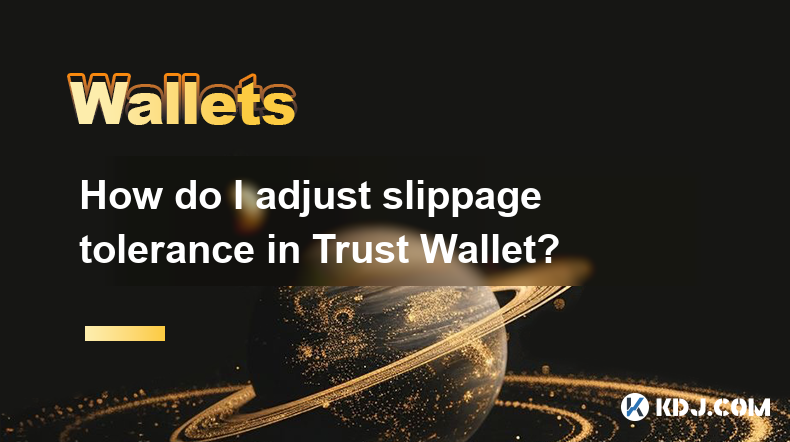
Understanding Slippage in Cryptocurrency Trades
Slippage refers to the difference between the expected price of a cryptocurrency trade and the actual price at which the trade is executed. This discrepancy often arises due to market volatility, especially during periods of high trading volume. A higher slippage means you're paying more (or receiving less) than anticipated. Understanding and managing slippage is crucial for successful cryptocurrency trading. Trust Wallet, like many other exchanges, allows you to adjust your tolerance for slippage to mitigate potential losses.
Locating the Slippage Tolerance Setting in Trust Wallet
Trust Wallet doesn't offer a direct, centralized "slippage tolerance" setting like some dedicated cryptocurrency exchanges. The slippage tolerance is implicitly managed within the decentralized exchange (DEX) you're using through Trust Wallet. This usually involves interacting with a DEX like Uniswap, PancakeSwap, or others directly within the Trust Wallet interface. The process varies slightly depending on the DEX. You won't find a global setting within Trust Wallet itself to control slippage across all DEX interactions.
Adjusting Slippage Tolerance on Popular DEXs via Trust Wallet
The method for adjusting slippage tolerance differs depending on the specific DEX. Let's examine a few popular examples:
Uniswap (and similar DEXs using the same interface): When initiating a swap on Uniswap via Trust Wallet, you'll see a field usually labeled "Slippage Tolerance." This field typically allows you to input a percentage value. A lower percentage (e.g., 0.1%) means you'll only accept trades that fall within 0.1% of your expected price. A higher percentage (e.g., 1%) increases your chances of a successful trade but also increases the risk of unfavorable slippage. Always carefully consider your chosen percentage based on market conditions.
PancakeSwap (and similar DEXs using the same interface): Similar to Uniswap, PancakeSwap (accessed through Trust Wallet) usually presents a "Slippage Tolerance" option during the swap process. This is often represented as a percentage. Choosing a lower percentage reduces slippage risk but may lead to failed trades if the market moves too quickly. A higher percentage increases the likelihood of trade execution but exposes you to potentially larger slippage.
Other DEXs: Other decentralized exchanges accessible through Trust Wallet may have slightly different interfaces. However, the core concept remains the same. Look for settings related to "slippage," "price impact," or similar terms. Always read the instructions and warnings provided by the specific DEX before adjusting any settings.
Factors Affecting Slippage Tolerance
Several factors influence the optimal slippage tolerance you should set:
Market Volatility: During periods of high volatility, setting a higher slippage tolerance might be necessary to ensure your trade executes. Conversely, during calmer periods, a lower tolerance is generally preferable.
Trade Size: Larger trades tend to experience more slippage than smaller ones. This is because a large order can significantly impact the market price. For larger trades, a higher slippage tolerance might be necessary.
Liquidity: Assets with high liquidity usually exhibit less slippage. Low liquidity assets are more susceptible to price fluctuations during trades, potentially resulting in higher slippage.
Step-by-Step Guide (Example: Uniswap via Trust Wallet)
Let's outline a hypothetical step-by-step guide for adjusting slippage tolerance on Uniswap through Trust Wallet:
Open Trust Wallet: Launch the Trust Wallet application on your mobile device.
Access Uniswap: Navigate to the DApp browser within Trust Wallet and access the Uniswap interface.
Initiate a Swap: Select the tokens you wish to swap and enter the desired amounts.
Locate Slippage Tolerance: Before confirming the transaction, look for the "Slippage Tolerance" or similar setting.
Adjust the Percentage: Enter your desired slippage tolerance percentage. Remember, lower percentages are safer but may lead to failed trades, while higher percentages increase the risk of unfavorable slippage.
Review and Confirm: Double-check all details before confirming the transaction.
Understanding the Implications of Different Slippage Tolerances
Choosing a very low slippage tolerance can lead to failed transactions, especially during volatile market conditions. A trade might fail to execute if the market price moves beyond your specified tolerance before the transaction is confirmed. On the other hand, selecting a very high slippage tolerance increases the risk of significant losses due to unfavorable price movements. The optimal slippage tolerance depends on your risk appetite and market conditions. It's always advisable to start with a lower tolerance and gradually increase it if necessary.
Frequently Asked Questions
Q: What happens if my trade fails due to insufficient slippage tolerance?
A: If your trade fails due to insufficient slippage tolerance, your transaction will simply not be executed. Your funds will remain in your Trust Wallet.
Q: Can I adjust slippage tolerance after initiating a trade?
A: No, you cannot adjust the slippage tolerance after initiating a trade. The slippage tolerance must be set before confirming the transaction.
Q: Is there a "best" slippage tolerance setting?
A: There's no single "best" slippage tolerance. The optimal setting depends on various factors, including market volatility, trade size, and your risk tolerance. A range of 0.5% to 1% is often considered acceptable for many trades, but this can vary significantly.
Q: Why is slippage tolerance important?
A: Slippage tolerance is crucial because it protects you from unexpected price changes during the execution of your trade. Setting an appropriate tolerance helps manage risk and prevents potentially significant losses.
Q: Does slippage only affect buying trades?
A: No, slippage affects both buying and selling trades. The price discrepancy can occur in either direction, impacting both your purchase price and your sale price.
Q: Where can I find more information about slippage?
A: You can find more information about slippage by searching online resources, consulting cryptocurrency trading guides, or reviewing the documentation provided by the specific DEX you're using. Many educational resources are available to help you understand this important concept.
Disclaimer:info@kdj.com
The information provided is not trading advice. kdj.com does not assume any responsibility for any investments made based on the information provided in this article. Cryptocurrencies are highly volatile and it is highly recommended that you invest with caution after thorough research!
If you believe that the content used on this website infringes your copyright, please contact us immediately (info@kdj.com) and we will delete it promptly.
- Ethereum and Toncoin Lead the Cryptocurrency Market into a New Bull Season
- 2025-03-30 18:10:12
- Injective, a Layer-1 Blockchain, Joins the Blockchain Association to Advocate for Web3 Finance Applications
- 2025-03-30 18:10:12
- Bitcoin (BTC) Price Prediction: Could Experience a Full Market Rebound After Breaking Out From Falling Wedge
- 2025-03-30 18:05:12
- Gold prices are rising as concerns over stagflation in the U.S. economy (inflation amid the economic downturn) are growing due to the tariff shock caused by U.S. President Donald Trump.
- 2025-03-30 18:05:12
- Cango Inc. (NYSE: CANG) pivots from automobile trading to Bitcoin mining
- 2025-03-30 18:00:13
- Ulster Grand National runner by runner betting Guide
- 2025-03-30 18:00:13
Related knowledge
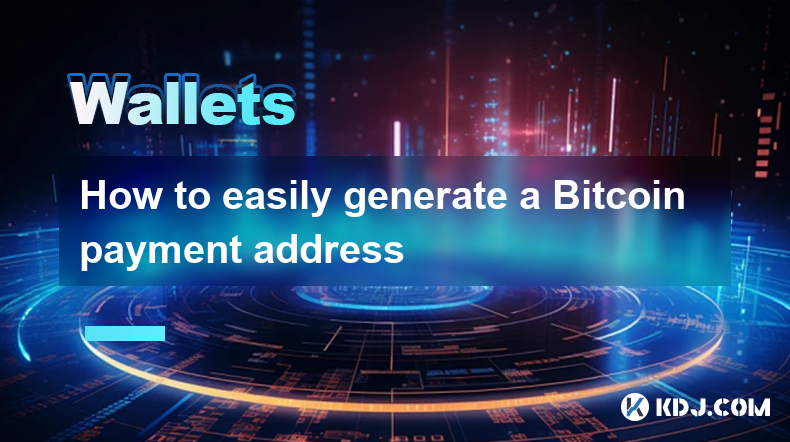
How to easily generate a Bitcoin payment address
Mar 29,2025 at 10:49am
Generating a Bitcoin payment address might seem daunting, but it's actually quite straightforward. This process is crucial for receiving Bitcoin, as each transaction requires a unique address. Understanding how this works is fundamental to using Bitcoin effectively. This guide will walk you through the simple steps, regardless of your technical experti...
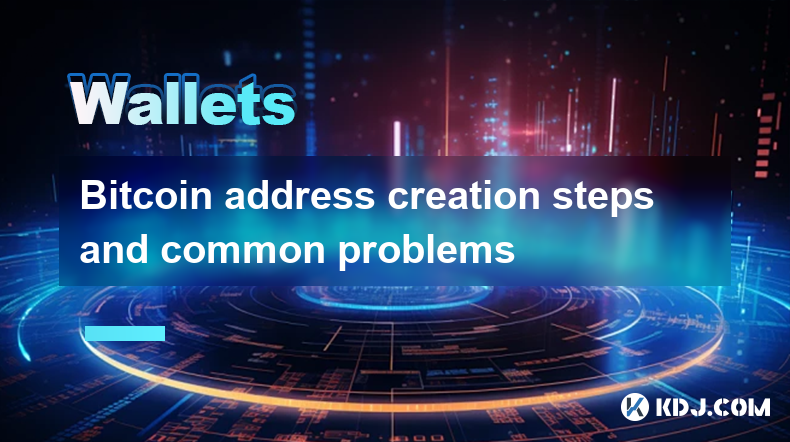
Bitcoin address creation steps and common problems
Mar 30,2025 at 06:07am
Understanding Bitcoin AddressesA Bitcoin address is a unique identifier, similar to a bank account number, used to receive Bitcoin. It's a string of alphanumeric characters generated from a public key, derived from your private key. Understanding the distinction between public and private keys is crucial for Bitcoin security. Your private key should be...
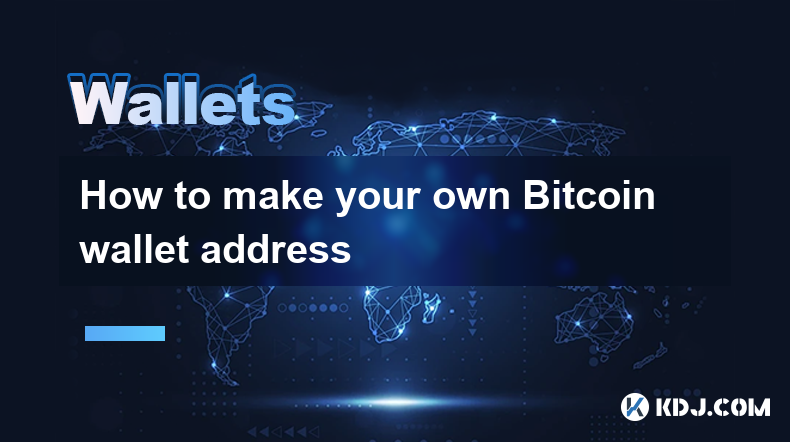
How to make your own Bitcoin wallet address
Mar 29,2025 at 08:42pm
Creating your own Bitcoin wallet address is crucial for securing and managing your Bitcoin holdings. It allows you to independently receive and send Bitcoin without relying on third-party services. This process involves understanding the different types of wallets and choosing the one that best suits your needs and technical expertise. Incorrectly gene...
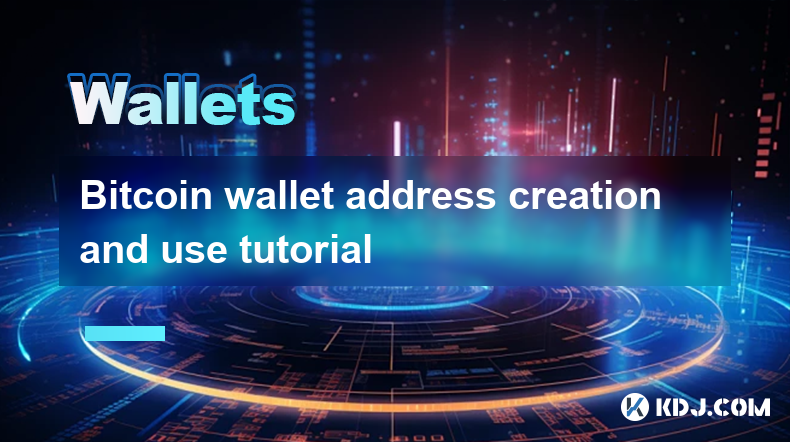
Bitcoin wallet address creation and use tutorial
Mar 29,2025 at 10:14pm
Understanding Bitcoin Wallet AddressesA Bitcoin wallet doesn't store Bitcoin in the way a traditional bank account does. Instead, it stores private keys, which are cryptographic secrets allowing you to access and spend your Bitcoin. Your Bitcoin address, on the other hand, is a public identifier, like an email address, that others can use to send you B...

Bitcoin address generation and secure storage guide
Mar 30,2025 at 08:07am
Understanding Bitcoin AddressesA Bitcoin address is essentially your public key, a string of alphanumeric characters used to receive Bitcoin. It's analogous to your bank account number. Unlike your private key, which is crucial for spending your Bitcoin, your address can be shared publicly without compromising your funds. Generating a new address is sim...
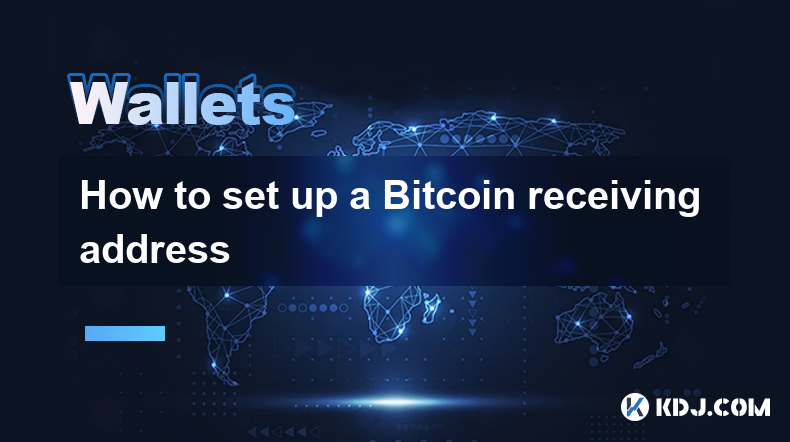
How to set up a Bitcoin receiving address
Mar 30,2025 at 06:14pm
Understanding Bitcoin Receiving AddressesA Bitcoin receiving address is essentially your unique identifier on the Bitcoin network. It's a string of alphanumeric characters that allows others to send Bitcoin to you. Think of it like your bank account number, but specifically for Bitcoin. You need a receiving address to receive Bitcoin. Crucially, you ca...

How to easily generate a Bitcoin payment address
Mar 29,2025 at 10:49am
Generating a Bitcoin payment address might seem daunting, but it's actually quite straightforward. This process is crucial for receiving Bitcoin, as each transaction requires a unique address. Understanding how this works is fundamental to using Bitcoin effectively. This guide will walk you through the simple steps, regardless of your technical experti...

Bitcoin address creation steps and common problems
Mar 30,2025 at 06:07am
Understanding Bitcoin AddressesA Bitcoin address is a unique identifier, similar to a bank account number, used to receive Bitcoin. It's a string of alphanumeric characters generated from a public key, derived from your private key. Understanding the distinction between public and private keys is crucial for Bitcoin security. Your private key should be...

How to make your own Bitcoin wallet address
Mar 29,2025 at 08:42pm
Creating your own Bitcoin wallet address is crucial for securing and managing your Bitcoin holdings. It allows you to independently receive and send Bitcoin without relying on third-party services. This process involves understanding the different types of wallets and choosing the one that best suits your needs and technical expertise. Incorrectly gene...

Bitcoin wallet address creation and use tutorial
Mar 29,2025 at 10:14pm
Understanding Bitcoin Wallet AddressesA Bitcoin wallet doesn't store Bitcoin in the way a traditional bank account does. Instead, it stores private keys, which are cryptographic secrets allowing you to access and spend your Bitcoin. Your Bitcoin address, on the other hand, is a public identifier, like an email address, that others can use to send you B...

Bitcoin address generation and secure storage guide
Mar 30,2025 at 08:07am
Understanding Bitcoin AddressesA Bitcoin address is essentially your public key, a string of alphanumeric characters used to receive Bitcoin. It's analogous to your bank account number. Unlike your private key, which is crucial for spending your Bitcoin, your address can be shared publicly without compromising your funds. Generating a new address is sim...

How to set up a Bitcoin receiving address
Mar 30,2025 at 06:14pm
Understanding Bitcoin Receiving AddressesA Bitcoin receiving address is essentially your unique identifier on the Bitcoin network. It's a string of alphanumeric characters that allows others to send Bitcoin to you. Think of it like your bank account number, but specifically for Bitcoin. You need a receiving address to receive Bitcoin. Crucially, you ca...
See all articles





















































































